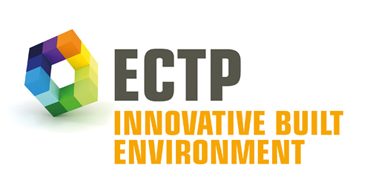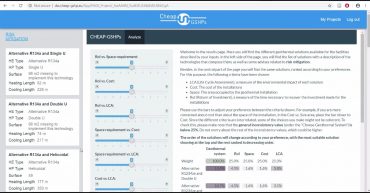WP1 – Geological mapping, climatic data and energy requirements
Leader: UNIPD
Participants: CNR, UPV, RESEARCH AND ENVIRONMENTAL DEVICES, FAU, CRES, SUPSI, SLR Consulting Ireland, Geo-Green, UNITED NATIONS EDUCATIONAL, SCIENTIFIC AND CULTURAL ORGANIZATION -UNESCO, Pietre Edil
Objectives
- Evaluate the most representative geological contexts in the partner countries
- Evaluate the base thermal properties of rock- and unconsolidated materials
- Define representative climatic conditions from the participating partner countries
- Relate buildings case studies for different users destination to specific climatic, geothermal, geological conditions for shallow geothermal application
- Develop thematic maps useful for managing shallow geothermal system applications at municipal level
- Identification of the Historical Buildings (UNESCO) demonstration
WP2 – Helicoidal GSHE and drilling machine developments
Leader: FAU
Participants: UNIPD, RESEARCH AND ENVIRONMENTAL DEVICES, REHAU, Hydra, Geo-Green
Objectives:
- To define modifications to the excavator drilling machine and tools in the diameter range of 400 – 500 mm at low depths
- To study an easy drill machine variant capable of drilling holes with diameters of about 350 mm at various depths and study, simulate and develop GSHE geometries for these boreholes
- To study, simulate and develop geometries of ‘ heat basket type ‘ of GSHE to fit with borehole diameters of up to 175 mm using ‘ vibrasond + easy drill ‘ machine prototype ( Hybrid )
- To identify the best BHE/machine combinations
WP3 – Coaxial GSHE and installation machine development
Leader: RESEARCH AND ENVIRONMENTAL DEVICES (RED)
Participants: CNR, UNIPD, UPV, Galletti Belgium NV, REHAU, FAU, CRES, Hydra, Geo-Green
Objectives:
- To develop, test and build a vibrating, rotating machine head for existing penetrometers
- To develop and test nozzles to inject water and thermally enhancing fluids from the tip of the GSHE
- To study and develop machine ancillaries to speed up and reduce labor during installation and integrate also the ‘easy drill ‘ technique in the newly to be built ‘ Hybrid ‘ machine
- To optimize the design of the GSHE with larger diameter and internally insulated pipes
- To study alternative materials and corrosion protection
WP4 – Software and modelling tools for low enthalpy geothermal systems and heat pump developments
Leader: Galletti Belgium NV
Participants: CNR, UNIPD, UPV, RESEARCH AND ENVIRONMENTAL DEVICES,
ANER
Objectives:
- To develop the engine for the DSS for the sizing of the GSHP system
- To develop a free-ware numerical model for the dynamic simulation for sizing BHE and GSHP systems
- To develop a guideline for optimal selection of a heat pump
- To develop a heat pump at high temperature with the environmental friendly CO2 refrigerant
- To define configurations of shallow geothermal energy systems with other renewable energy systems
WP5 – Decision support tool development
Leader: TECNALIA
Participants: CNR, UNIPD, UPV, RESEARCH AND ENVIRONMENTAL DEVICES, Galletti Belgium NV, ANER, FAU
Objectives:
- To develop a rule based DSS engine for safety and cost assessment of the geothermal installations
- To develop the information data models for a structured organization of available data
- To develop a user friendly web platform that gives access to the developed system and allows the 2D/3D visualization of data.
WP6 – Demonstration cases and scenario’s
Leader: CRES
Participants: CNR, UNIPD, UPV, RESEARCH AND ENVIRONMENTAL DEVICES, Galletti Belgium NV, REHAU, FAU, SLR Consulting Ireland, Hydra, Geo-Green, UNITED NATIONS EDUCATIONAL, SCIENTIFIC AND CULTURAL ORGANIZATION -UNESCO, Pietre Edil
Objectives:
- Demonstrate the developed technology at 6 sites: helicoidal ground heat exchanger, coaxial ground heat exchanger, drilling equipment & methods, high temperature heat pump
- Evaluate energy output of developed helicoidal and coaxial ground heat exchangers in different climatic conditions through measurements of pilot systems in 6 sites for at least 12 months
- Evaluate the high temperature heat pump performance: energy output, efficiency, reliability, temperature levels
- Predict performance of developed systems in the long run by computer simulation: virtual cases
- Compare with standard technology
WP7 – Environmental Impact, Risk Assessment, Standards & Regulations
Leader: SLR Consulting Ireland
Participants: CNR, UNIPD, TECNALIA, UPV, RESEARCH AND
ENVIRONMENTAL DEVICES, FAU, CRES, SUPSI, UNITED NATIONS EDUCATIONAL, SCIENTIFIC AND CULTURAL ORGANIZATION -UNESCO, Pietre Edil
Objectives:
- Legislative and Regulatory Impact Analysis for the deployment shallower closed loop collectors at key sites
- Transferrable Risk Assessment Matrices for Regulatory and Environmental Conditions
- Environmental Impact Assessment at Case Study Locations
- Life Cycle Cost Analysis and Carbon Footprint
- Standards – Materials, Drilling and Equipment – Overview and Promotion
- Regulatory Recommendations with respect to facilitating the deployment of the new technologies developed
WP8 – Exploitation and market deployment
Leader: Universitat Politècnica de València
Participants: CNR, UNIPD, TECNALIA, RESEARCH AND ENVIRONMENTAL DEVICES, Galletti
Belgium NV, REHAU, CRES, SLR Consulting Ireland, Hydra, Geo-Green, Pietre Edil
Objectives:
- In depth analysis of the current situation in regard to market penetration, market potential and identification of barriers in the countries of the participating industrial partners. Identification of the business opportunities of the products developed within Cheap-GSHPs project.
- Assessment on how the new products (heat exchanges, drilling technologies, information tools and software design aid tools) can contribute to overcome those barriers in order to extend the GSHP market or exploit new market niches.
- Development of the exploitation plans for the new products (heat exchangers) and services (drilling technologies) obtained within the framework of the project
- Development of new Business Models (BM) addressing the safe exploitation of the Cheap-GSHPs technologies. It is likely that more than one independent Business Activity may emerge due to the variety of focuses of the project.
- Development of an IPR strategy. Identification of sensible Intellectual Property Rights for the new products and processes and analysis of those mechanisms that will better allow safeguarding them.
- Financing routes will be identified, albeit subsidies at regional or national level, use of structural funds, use of ESCO’s, etc…
- Integration of the conclusions about the environmental issues and risk assessment into the BM
WP9 – Training, education and dissemination
Leader: SRG – RGS
Participants: CNR, UNIPD, TECNALIA, UPV, RESEARCH AND ENVIRONMENTAL
DEVICES, Galletti Belgium NV, ANER, REHAU, FAU, CRES, SUPSI, SLR Consulting Ireland, Hydra, Geo-Green, UNITED NATIONS EDUCATIONAL, SCIENTIFIC AND CULTURAL ORGANIZATION -UNESCO, Pietre Edil
Objectives:
- Development of the training, education and dissemination plan
- Development of the training manual
- Training program
- Dissemination of project’s results
WP10 – Project and consortium management [Months: 1-48]
Leader: CNR
Participants: UNIPD, TECNALIA, UPV, RESEARCH AND ENVIRONMENTAL DEVICES, Galletti Belgium NV, SRG – RGS, FAU, CRES, SLR Consulting Ireland
Objectives:
- To assure an effective project direction and management
- To promote communication and collaboration among the Partners
- To assure the achievement of the project objectives within the specified cost and time framework
- To assure high quality of the project work and deliverables
- To perform the financial, legal, administrative and technical co-ordination
- To establish the links and interrelations with all project Work Packages
- To manage knowledge, intellectual property rights and promoting gender equality in the project
- To establish communication flow and methods with the European Commission
- To promote networking activities with other EC projects






